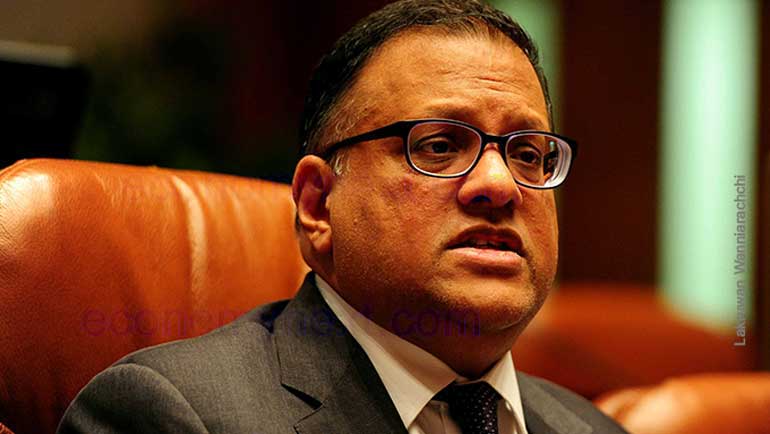Sunday Dec 07, 2025
Sunday Dec 07, 2025
Monday, 25 April 2016 00:20 - - {{hitsCtrl.values.hits}}

Reuters: The Central Bank is expected to keep its key interest rates steady on Tuesday, a Reuters poll showed, having tightened policy twice since December to ease the pressure on the fragile local currency.
Six out of 11 economists surveyed expect the Central Bank to keep its standing deposit facility rate (SDFR) and its standing lending facility rate (SLFR) steady at 6.50% and 8.00%, respectively. Four expect 50 basis point increases in both rates while one expects 25 basis point increases in both rates.
The Central Bank raised both the SDFR and the SLFR by 50 basis points each at its policy meeting in February from their record lows. This followed an increase in commercial banks’ statutory reserve ratio by 150 basis points in December.
“Leaving the policy rates steady will pressure the rupee,” said Danushka Samarasinghe, research head at Softlogic Stockbrokers.
“It will also have an adverse impact on the fiscal consolidation efforts as the Government’s tax hikes are yet to be implemented. Still we see high private sector credit and imports.”
Five out of 11 analysts expect the central bank to raise the policy rates to keep government borrowing in check through tighter financing conditions.
All 11 economists expect the statutory reserve ratio (SRR) to remain unchanged at 7.50%.
Central Bank Governor Arjuna Mahendran last week said there was no need for further rate hikes unless there was a sudden spike in credit growth.
These comments come despite the International Monetary Fund (IMF) calling for the bank to be prepared to tighten further if core inflation and credit growth continued to grow.
Analysts say a rate hike could strengthen Sri Lanka’s position in its negotiations for a loan with IMF, which is in its final stage, as it would signal a readiness to stem outflows and consolidate its finances.
The IMF has urged Sri Lanka to reduce its fiscal deficit, raise government revenue and improve foreign exchange reserves, which were at $ 6.2 billion as of end-March, down by nearly a third from October 2014 when they touched a record high.
Private sector credit growth by commercial banks accelerated to 25.7% year-on-year in January from 25.1% in December. In December, it slowed for the first time since August 2014.
While local treasury bill yields have risen by between 200 and 287 basis points across the curve since the December rate hike, the tightening has failed to relieve pressure on the currency.
The rupee has come under pressure due to lower interest rates, higher imports, and foreign outflows from government securities.
The spot rupee is hovering at 144.00 per dollar, but banks are reluctant to trade below this level amid moral suasion from the Central Bank, currency dealers say. The spot-next or five-day rupee forward has been trading around 147.00 to the dollar since 27 January.